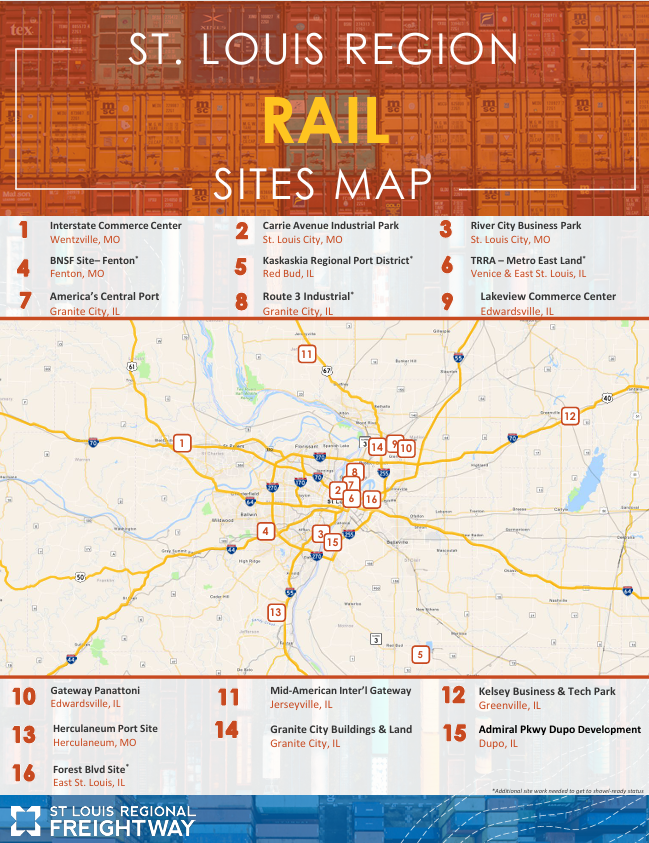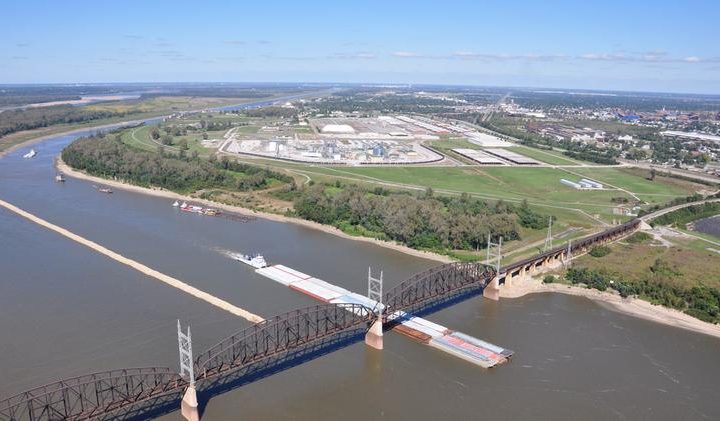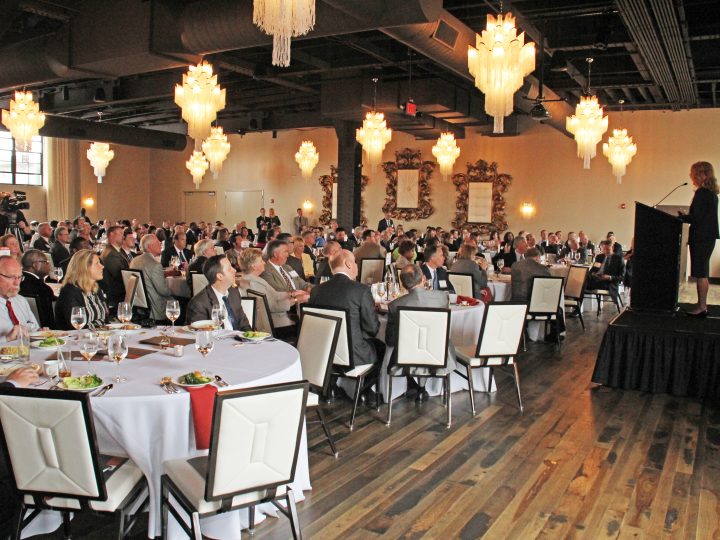
The St. Louis Regional Freightway has added three additional properties to its growing pipeline of rail-accessible industrial real estate sites: Admiral Parkway, Forest Boulevard, and Granite City Buildings and Land. They bring the total number of rail-served sites in the pipeline to 20, spread across 16 locations. These sites all feature heavy industrial user zoning ready for developers to take advantage of the region’s global connectivity with access to all six Class I railroads and rail infrastructure that is constantly being improved.
The new site locations offer more than 1,150 acres combined. Admiral Parkway in Dupo, Illinois, is the largest of the three, encompassing 1,000 acres with rail service potential through Union Pacific Railroad. It lies within an Enterprise Zone and a Tax Increment Financing (TIF) District and is located adjacent to Interstate 255 (I-255). The Illinois Department of Transportation’s FY 2024-2029 Proposed Highway Improvement Program includes $45 million in funding toward the new I-255/Davis Street Ferry Road interchange, which will provide direct access to and from the site.
“The Admiral Parkway site’s location right off I-255 with immediate access to Union Pacific’s Intermodal Yard gives it a unique advantage within this region,” said Joe Koppeis, Developer, Admiral Parkway. “We look forward to engaging with end users who will benefit from locating their facilities here.”
The Forest Boulevard site in Washington Park, Illinois, features 125 acres divided into three parcels with rail service potential through Alton & Southern Railway, which owns the site. The site is also highly accessible by truck, located just 1 mile east of Illinois Route 111, 2 miles west of I-255, 3.5 miles north of Interstate 64, and 3.7 miles south of Interstate 55. It also is located in an Enterprise Zone and a TIF District.
The Granite City Buildings and Land site in Granite City, Illinois comprises 31.82 acres, right off Interstate 270. The site has two parcels with five buildings. These facilities range from 6,300 square feet to 41,400 square feet and include covered storage, warehouse space and office space. An existing rail spur is serviced by Alton & Southern Railway.
Rail distribution continues to grow in importance, with the Federal Highway Administration estimating the industry will increase 30% over the next two decades. Already recognized as one of the largest rail hubs in the nation, the St. Louis region aims to take advantage of this projected growth by focusing on new industrial development within rail-accessible sites, while simultaneously investing in strengthening existing rail infrastructure. Rail service and infrastructure in the St. Louis region are constantly improving, thanks to the commitment of public and private leaders who are collaborating to identify priority projects and advocate for funding for them.
“Continued investments support the unparalleled rail service available in the St. Louis region, providing access to all corners of the country without interchange,” said Brent Wood, President of Terminal Railroad Association of St. Louis (TRRA). TRRA also has 195 rail-served acres available in the Metro East. “Companies taking advantage of these sites are served by six fully functioning rail terminals and all six Class I railroads and benefit from the cooperative and local carrier ownership of key rail routes.”
Wood also serves as the chair of the St. Louis Regional Freightway’s Freight Development Committee.
Recent investments include the $222 million replacement of the Merchant’s Bridge over the Mississippi River just north of downtown St. Louis; more than $10 million for track signal and switch improvements made at the junction of five of the region’s railroads in Mitchell, Illinois; and nearly $60 million in upcoming improvements to the MacArthur Bridge, which crosses the Mississippi River south of downtown St. Louis. Additional upgrades are planned for the St. Louis Multimodal Madison Rail Yard that is part of the Terminal Railroad system. A series of projects at St. Louis area ports will enhance rail infrastructure and help increase the integration of barge to rail connectivity in what is already recognized as the most efficient inland port system in the nation.
Mary Lamie, Executive Vice President of Multimodal Enterprises for Bi-State development and head of the St. Louis Regional Freightway, said the St. Louis region’s continued investment in rail infrastructure improvements benefits all modes of transportation, and supports the St. Louis Regional Freightway’s strategic initiative that is helping advance underutilized sites that support industrial development.
“Continuing public and private sector collaboration supports this infrastructure investment and the ongoing efforts to expand our pipeline of developable, ready-to-market industrial sites,” Lamie said. “These are sites that can handle heavy industry and are ideal for end-users that are ready to take advantage of the strong rail infrastructure, intermodal capacity and proximity to suppliers in the bi-state St. Louis area.”
To view the full report with information about each of the rail served sites, visit https://www.thefreightway.com/real-estate/rail-access/ or contact Mary Lamie at mclamie@nullTheFreightway.com




